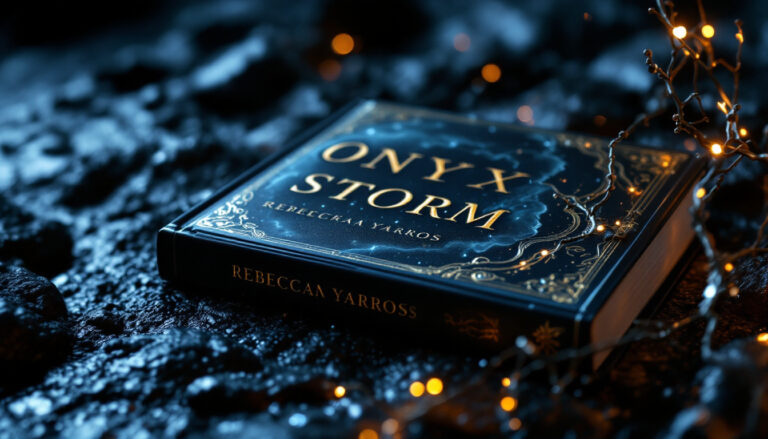Mad Honey by Jodi Picoult & Jennifer F. Boylan – A Inspiring Review
In “Mad Honey,” Jodi Picoult and Jennifer Finney Boylan take readers on an emotional journey through the lives of Olivia and Lily. At its core, this novel weaves together suspense, love, and the quest for self-acceptance in the face of adversity. You’re invited to explore the intricacies of personal trauma, the challenges of domestic violence, and the evolving landscape of gender identity.
The story unfolds in a unique narrative style that alternates between Olivia’s present and Lily’s past, creating a non-linear but engaging reading experience. The beekeeping backdrop adds depth and symbolism, reflecting themes of resilience and change. As the plot thickens with the mystery surrounding Lily’s death, it raises pressing questions about secrecy and the paths to healing.
Whether you’re a seasoned reader or just starting your literary adventure, “Mad Honey” promises to offer valuable insights into the human experience, compelling you to reflect on the complexities of love, identity, and acceptance.
Overview of Mad Honey
The novel “Mad Honey” intertwines the lives of two strong women, Olivia McAfee and Lily Campanello. Their stories, narrated from different timelines, invite the reader to witness their struggles, secrets, and the tragic events that connect them. Let’s explore the main characters, the plot, and the compelling themes that make this book so impactful.
Main Characters
Olivia McAfee is a central figure in “Mad Honey”. After escaping a tumultuous marriage, she returns to her hometown to rebuild her life and take over her family’s beekeeping business. As a mother, Olivia grapples with her past while trying to nurture her son, Asher. Her role as a beekeeper symbolizes her journey toward healing and personal growth. Through her perspective, readers experience the complexities of domestic violence and the challenges of keeping a family together in a fractured world.
Lily Campanello serves as another pivotal character in the story. Her significance is tied to the mystery surrounding her death, which acts as a catalyst for Olivia’s journey. Lily’s story addresses themes of gender identity and societal expectations, highlighting her struggles to define herself in a world that often imposes limitations. The dual perspectives of Olivia and Lily create a rich tapestry of emotions and conflicts that propel the narrative forward.
Plot Summary
The plot unfolds with the discovery of Lily’s death, setting off a chain of events that forces Olivia and Asher to confront their deepest fears. As Olivia navigates her relationship with her son, the mystery surrounding Lily’s demise serves as a backdrop, leading to revelations that shake their lives.
Key events include:
- Olivia’s return to her roots as she takes over the family business.
- The relationship dynamics between Olivia and Asher, showcasing their close bond and the impact of Lily’s death.
- Flashbacks revealing Lily’s struggles, which add layers to her character and deepen the reader’s understanding of her fate.
The intertwining journeys of the two women address themes of loss, identity, and resilience, all while keeping readers engaged with the unfolding mystery.
Themes Explored
“Mad Honey” touches on several profound themes that resonate with many readers:
- Domestic Violence: Olivia’s past is riddled with the scars of her abusive marriage. The narrative paints a raw picture of the psychological impact of such experiences and the long road to recovery.
- Gender Identity: Lily’s story is a powerful exploration of gender identity and the challenges faced by those who feel different. Her journey highlights the need for acceptance and understanding in a world that often lacks both.
- Trauma and Acceptance: Both Olivia and Lily experience trauma that shapes their identities. The book emphasizes the importance of confronting one’s past to find peace and acceptance.
As the story progresses, these themes interweave with the emotional narrative, inviting readers to engage in a deeper conversation about love, acceptance, and the challenges of personal healing.
To dive deeper into the significance of these themes, check out this review on Aquamarine Flavours. For insights into character development, read more at The Lies They Tell.
Narrative Style
The narrative style in “Mad Honey” plays a crucial role in shaping the reader’s understanding of the characters and the unfolding story. The authors, Jodi Picoult and Jennifer Finney Boylan, utilize an alternating first-person narrative. This approach invites readers to connect intimately with both Olivia and Lily, making their experiences resonate on a deeper level. By switching between timelines and perspectives, the authors weave a rich tapestry of emotion and insight that keeps readers engaged and invested in the characters’ journeys.
Character Development
Throughout the novel, character development is a significant focus. Olivia and Lily undergo profound transformations as they confront their personal struggles.
- Olivia’s Journey: Initially, Olivia is depicted as a victim of her past, haunted by her abusive marriage. As she returns to her hometown and resumes beekeeping, she gradually finds strength. Her role as a mother drives her to protect her son and seek a brighter future. Each challenge she faces adds layers to her character, showcasing her resilience and growth.
- Lily’s Evolution: Lily, though absent for much of the novel due to her tragic fate, comes to life through flashbacks. Her experiences with identity and societal expectations reveal a young woman fighting for acceptance. As readers understand her struggles, the depth of her character emerges, making her fate all the more impactful.
This dual character arc invites readers to reflect on how trauma shapes individuals and relationships over time. Check out more insights into character development in this review on The Lies They Tell.
Beekeeping as a Motif
Beekeeping emerges as a powerful motif throughout “Mad Honey.” It serves not just as a backdrop but also as a symbol of growth, community, and the complexities of life.
- Healing and Growth: Olivia’s return to beekeeping represents her desire to heal from her past. The meticulous care required for bees mirrors her journey toward personal recovery. Just as bees create honey, a product of hard work and collaboration, Olivia’s journey involves building a new life filled with purpose and care.
- Symbolism of the Bees: The bees themselves are emblematic of the characters’ struggles. They work together for a common goal, reflecting Olivia’s effort to forge connections and nurture her family. However, the danger posed by “mad honey” also hints at the darker aspects of life—how beauty can sometimes conceal toxicity.
Through this lens, beekeeping transcends its functional role in the story and becomes a profound metaphor for resilience and the delicate balance of life. For more on how beekeeping intertwines with the story, read Mad Honey by Jodi Picoult and Jennifer Finney Boylan.
Social Issues Addressed
“Mad Honey” is not just a compelling narrative; it also shines a light on significant social issues that are highly relevant today. Through the stories of Olivia and Lily, readers are confronted with themes that resonate deeply within our current societal landscape.
Cultural Relevance
The book addresses cultural issues like gender identity and domestic abuse, making it timely and impactful. In recent years, discussions about gender fluidity and acceptance have transformed societal norms. Lily’s journey as a transgender person pulls readers into this conversation. It challenges stereotypes and prompts important discussions about acceptance and understanding. Families and communities must engage with these themes, just as Olivia and Lily do in their lives.
Additionally, the book tackles domestic violence—a problem that remains pervasive in many societies. Olivia’s experiences highlight the complexities of abusive relationships and the long-lasting effects such trauma can have. By delving into these cultural issues, the authors encourage readers to reflect on how society reacts to those affected by violence and discrimination.
For deeper insights into these cultural themes, check out a detailed analysis of social relevance on Mad Honey with Jodi Picoult and Jennifer Finney Boylan.
Controversial Topics
“Mad Honey” handles controversial topics with sensitivity and thoughtfulness. The portrayal of a transgender character, Lily, is not without its challenges. Some readers may feel compelled to evaluate their own beliefs about gender and identity. This approach is crucial, as it helps bridge the gap between understanding and acceptance.
The book also explores the harsh realities of domestic abuse, presenting a raw portrayal that could evoke strong emotions. While some might find the depiction of abusive relationships challenging, it serves an important purpose. It opens a dialogue on a subject that is often hushed in daily conversations. Readers may respond differently based on their personal experiences, leading to discussions that can foster greater awareness about these issues.
Different perspectives may arise, creating a spectrum of reactions among readers. Some may appreciate the brave inclinations to tackle these themes, while others might find them difficult to confront. This diverse range of reader response adds to the richness of the reading experience.
To see more about the book’s exploration of controversial topics, visit Mad Honey Themes. This further extends the conversation surrounding the implications of trauma and identity in our lives.
Critique and Reception
“Mad Honey” by Jodi Picoult and Jennifer Finney Boylan has sparked much conversation among readers and critics alike. Its exploration of deep themes paired with engaging characters has led to a mix of praise and some criticisms. Let’s take a closer look at both sides of the response to this novel.
Positive Reviews
Many readers have praised “Mad Honey” for its character depth and emotional impact. The portrayal of Olivia and Lily resonates with those who appreciate stories that delve into complex human emotions. Reviewers often highlight the following aspects:
- Authenticity of Characters: Olivia, a mother grappling with her past, feels real and relatable. Readers connect with her struggles as she navigates her life and seeks healing through beekeeping. Her journey reflects themes of resilience that many find inspiring.
- Emotional Weight: The emotional moments between Olivia and Asher, Olivia’s son, create a palpable bond that drives the narrative. These scenes often leave readers feeling a mix of hope and heartache, prompting self-reflection and empathy.
- Thought-Provoking Themes: The novel tackles significant topics such as domestic violence and gender identity. Critics commend the authors for handling these issues responsibly and sensitively. This adds depth to the reading experience, encouraging conversations about acceptance and understanding.
Many readers have expressed their appreciation in reviews, noting how the book challenges societal norms while maintaining an engaging storyline. For a more comprehensive look at reader responses, check out the review on Aquamarine Flavours.
Criticisms
Despite the positive feedback, some common criticisms have emerged regarding “Mad Honey.” Here are the points often raised by readers:
- Pacing Issues: Some readers feel that the pacing of the story can be uneven. While parts of the book are fast-paced and gripping, other sections may seem to drag. This inconsistency can disrupt the overall flow for certain audiences.
- Length of the Book: At times, the length has been noted as a concern. Readers have mentioned that some scenes seem to extend longer than necessary, which might leave them feeling weighed down. This can lead to moments where the narrative loses its edge, especially in what is otherwise a suspenseful plot.
Despite these criticisms, the ability of the authors to evoke strong emotions and provoke thought is largely recognized. The mixed reception reflects the complexity of the narrative. For deeper insights into the critiques of “Mad Honey,” consider visiting Book Club Chat.
As you can see, “Mad Honey” invites a range of responses, reflecting its rich narrative and emotional stakes. Whether praising the character depth or addressing the pacing, readers are engaging in meaningful discussions.
Conclusion
“Mad Honey” masterfully combines a gripping mystery with relevant social themes. The journey of Olivia and Lily resonates deeply, encouraging readers to confront issues of identity, trauma, and healing.
As you close the final pages, consider how these themes reflect our current society and personal experiences.
If the story moved you or sparked questions, consider sharing your thoughts. Have you faced similar challenges in your own life?
Let this book inspire further reflection on acceptance and resilience. Don’t hesitate to recommend it to friends or your book club. Happy reading!







